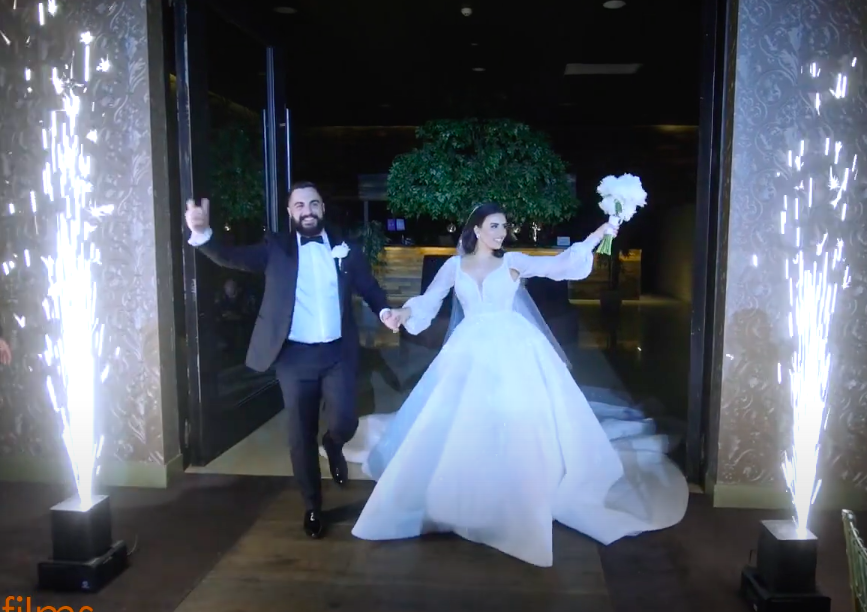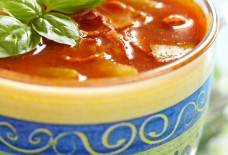Fusion of Western and Arab Weddings

Arab Wedding Entry. Photo: Iconic Films
By: Joud Sleilaty / Arab America Contributing Writer
In a world characterized by globalization and the increasing movement of people across borders, the fusion of cultures has become a more recurring phenomenon. This has led to the rise of multicultural weddings, where individuals from diverse national backgrounds come together in love and marriage. One particularly fascinating aspect of this cultural fusion is the blending of Western and Arab wedding traditions, highlighting the beauty of diversity and unity. Over time, I have noticed that more Arab people, including both people from my everyday life and celebrities, are marrying partners from different nationalities. In this article, we will explore the fusion of Western and Arab weddings, focusing on attire, customs, and the beauty of cultural diversity.
Fusion of Different Cultural Wedding Attires
One of the most striking aspects of multicultural weddings is the fusion of traditional attire from different cultures. When Western and Arab wedding traditions come together, the blending of wedding attire is often mesmerizing.
In Western weddings, brides typically wear white dresses symbolizing purity and new beginnings, while grooms opt for suits or tuxedos. Arab wedding attire, on the other hand, is known for its intricate designs. Even though Arab brides also wear white, their dresses are usually more elaborate, particularly in Muslim weddings where modesty is emphasized. Grooms, on the other hand, often wear the classic “kandura” or “dishdasha” in the Gulf region, showcasing a blend of elegance and tradition.
In Arab weddings, guests play a significant role in adding to the overall elegance of the celebration. Traditionally, they are expected wear beautiful gowns, and the more extravagant, the better. The emphasis on extravagant attire in Arab weddings reflects the desire to honor the significance of the occasion and enhance the celebratory ambiance. Unlike Western weddings, where guests refrain from wearing white to avoid diverting attention from the bride, this guideline is somewhat more flexible in Arab weddings. Wearing white as a guest is definitely looked down upon in Arab weddings but not as much as in Western ones.
Fusion of Cultural Traditions
Multicultural weddings beautifully blend customs and traditions from different cultures. When Arabs marry individuals from Western or other backgrounds, they create a special and heartfelt celebration that reflects the richness of both worlds.
In Arab weddings, customs like the lively “zaffa” music band and the exchange of symbolic gifts hold a significant place in tradition. Western weddings, on the other hand, include practices such as tossing the bouquet and exchanging vows. When these two worlds come together, they create unforgettable unique moments. Picture a wedding infused with the beats of Arab tablah, the Lebanese zalghouta and the joyful cheers of Western guests, or a ceremony where the bride and groom exchange vows in both their native languages, expressing universal love.
Multicultural weddings often feature a fusion of cuisines, bringing together the delightful flavors of Arab and Western dishes. Guests enjoy food from all around the world, savoring traditional Arab dishes like “shawarma” and “falafel” alongside Western favorites like pasta and steak.
Dancing adds another layer of excitement to Arab weddings, with the lively “dabka” dance being a highlight. When Arab and Western wedding traditions meet, the dance floor becomes a place where guests from both backgrounds come together to celebrate.
One of the most common fusions in weddings is seen in Arab and Latino unions. These weddings beautifully blend elements from both cultures, resulting in a vibrant and lively celebration. The well known Mariachi bands of Latino traditions harmonize perfectly with the festive Arab “zaffa”, creating a symphony of joy and cultural unity. The similarities in the warmth of these cultures and the richness of their cuisines bring people together.
Conclusion
In a world where globalization has brought people from different corners of the globe together, the fusion of Western and Arab weddings showcases the beauty of diversity. These weddings celebrate love that transcends borders and cultures, embodying the idea that two people from different backgrounds can come together to create a harmonious union. From the blend of wedding attire to the fusion of customs and traditions, multicultural weddings offer a glimpse into the vibrant mosaic of our interconnected world.
As we continue to witness more Arab individuals marrying partners from different nationalities, we should celebrate the richness of this cultural fusion. It reminds us that our differences are not barriers but opportunities to learn, grow, and build connections. In a world that can sometimes feel divided, multicultural weddings serve as a powerful reminder of our shared humanity and the beauty of a world where East and West can come together in love and unity.
Check out Arab America’s blog here!









